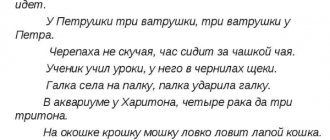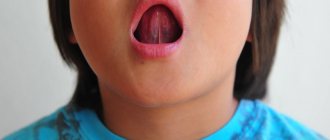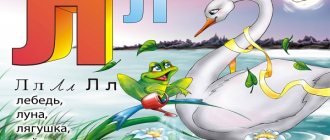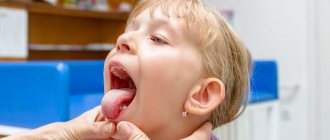In high-level professional theater, the viewer never suffers from poor hearing or slurred speech of the participants in the action, although in ordinary life (which the theater depicts) one often has to listen to the words of the interlocutor, even one-on-one. People rarely think about this, and certainly no one perceives an actor’s perfect speech as an achievement. But if the speech is slurred, they will certainly notice and point it out. Articulatory gymnastics for the tongue allows you to avoid this.
Along with texture, skills in creating an image, embodying speech, plasticity, choreography and vocals, mastery of speech is a factor in the professional suitability of an artist.
There is an opinion that speech and voice are from God, and gifted people who are naturally good at speaking are hired as actors. This is not true, speech is an acquired skill, correct and clear speech is a polished skill. We are all born with the same set of organs capable of producing sounds in the same way; the only difference can be in the timbre and tone of the voice. Of course, we do not take into account people whose speech apparatus has been damaged mechanically or suffered as a result of illness.
How exactly we talk about quality is determined by our daily needs. Since in society it is not customary to shout and talk too loudly, and our audience is most often limited to 1-2 interlocutors standing nearby, we do not need an ideal and polished sound. This is the main reason why the average person's speech is inexpressive. To blame the lack of natural data for this is to shift from a sore head to a healthy one. If you set a goal, you can catch up with the sound of an ordinary theater artist in a short time, and articulation gymnastics for adults will help with this.
Why is articulation gymnastics needed?
Learning to speak means training the moving muscles of the tongue, lips and cheeks to work synchronously to produce certain sounds. Articulatory gymnastics is needed to strengthen the muscles of the speech apparatus and develop muscle memory in them. With its help, a speech therapist provides sound for the child, and a professional speaker keeps his main instrument in good shape. A popular way to eliminate speech defects using tongue twisters is also a type of speech gymnastics, since pronouncing a tongue twister is an exercise in technique.
Rules for performing exercises
- It is recommended to perform a set of exercises in a good mood. The articulation is reminiscent of ordinary antics, but differs in the quality of the movements, so nothing prevents you from fooling around and having fun.
- The room should be bright and well ventilated. It is advisable that no one bothers you to study.
- Having a mirror will be a big plus, especially if your acquaintance with articulatory gymnastics is just beginning.
- You can’t exercise immediately after eating, just like on an empty stomach. At least 1 hour must pass since the last meal.
- When performing exercises, do not think about speed, it is secondary. The most important thing is pressure, muscle tension. After class you should feel tired and hot.
- You should not exercise for too long; 15–20 minutes a day will be enough.
Diction. Exercises for developing clear and pure speech
“Sasha lives in the world. Sasha has porridge in his mouth..."
This is a wonderful and instructive poem by S.V. Mikhalkov.
Good diction will help you out more than once in life. It is necessary always and everywhere, especially when you perform on stage in front of a large audience, practice vocals, shoot videos or participate in filming, like our studio members. No, we will not talk here about the causes and consequences of incorrect pronunciation; you will find this information in abundance on the Internet. Our goal is to help you correct existing speech defects on your own. During stage speech classes, studio mentors perform exercises with the children to correct diction, but this is not enough, since daily training is necessary to achieve results.
If you need to improve your diction, use special exercises. They will help you learn to speak beautifully and clearly and achieve success in life.
Diction is the degree of clarity in the pronunciation of sounds, syllables and words in speech. The clarity and purity of the sound of speech depend on the correct and active functioning of the articulatory apparatus.
Work on diction begins with articulation
Before starting pure speaking and tongue twisters, do a warm-up for your lips and tongue. This articulation exercise trains the muscles of the jaw, cheeks and tongue. It is perfect for both adults and children.
Rub your cheeks with circular movements of your fingers.
Pronounce the vowels slowly and continuously in one exhalation, stretching your lips as much as possible: “AAAAAA”, “EEEEEE”, “OOOOOO”, “UUUUU”, “YYYYYY”, “IIIIII”.
“Hamster” : inflate both cheeks, then inflate the cheeks alternately. Pull in your cheeks.
“Smile” : smile without opening your lips and stretching your lips as much as possible, while your teeth stand on top of each other in the “Fence” position.
“Nut” : we rest our tongue alternately on the left and then on the right cheek. This exercise is good for strengthening the cheek muscle and subsequently for producing the sound [r].
“Brushing your teeth” : imitate brushing your teeth with your tongue, while your mouth is wide open, your lower jaw is motionless, your tongue should be wide and move from bottom to top. First, brush the lower teeth on one side and the other, then from the molars to the center of the upper teeth on both sides, it is important that the tip of the tongue reaches the gums. The exercise is useful for producing the sounds [w], [r], [l], [sch].
“Painter” : movements with the tip of the tongue across the palate, as if we are painting the “ceiling” in the mouth, the mouth is wide open. The exercise strengthens the muscles of the tongue for the upper rise; it is especially good to use when making the sound [r].
“Spatula” : holding the tongue tense and spread on the lower lip for a count of five. In this case, it is important that the mouth is wide open, the lips are in a smile, the lower lip does not support the tongue and that it does not deviate to the side.
“Pussy laps milk” : movements of the tongue back and forth, when moving into the oral cavity, the lateral edges of the tongue are slightly bent, as if forming a ladle. This exercise trains the ability to quickly change the position of the tongue, strengthens its lateral muscles, stretches the hyoid ligament (frenulum) and is also good for making the sounds [w] and [r], when making the latter, good stretching of the frenulum is very important.
“Horse” : clicking your tongue like a horse. The exercise stretches the hyoid ligament well, strengthens the upper elevation of the tongue, and is used when making the sound [r]. In this case, it is very important that the mouth is open and the lower jaw remains motionless.
“Watch” : mouth slightly open. The lips are stretched into a smile. With the tip of the narrow tongue, alternately reach at the teacher’s count to the corners of the mouth.
“Snake” : mouth wide open. Push the narrow tongue forward and move it deep into the mouth.
"Swing" : mouth open. With a tense tongue, reach for the nose and chin, or the upper and lower incisors.
"Accordion" : mouth open. Suck your tongue to the roof of your mouth. Without lifting your tongue from the roof of your mouth, strongly pull down your lower jaw.
On average, it takes 15-20 minutes to warm up.
We are working on clear speaking
To develop the vocal apparatus and organize the correct pronunciation of sounds, use the following exercises.
Task 1. Pronounce difficult combinations of sounds. First slowly, then faster: LRO, NMI, JR, KPT, TLZ, MKRTCH, KFT, KSHT, KST, KTSCH, VRZH, KZhDA, KZhDO, KZhDU, KSHTA, KSHTE, KSHTU, KSHTO, ZZDRI, ZZDRE, ZZDRA, ZZDRO, ZZDRU, ZZDRU
Task 2. Exercises on sound combinations: PTA-PTO-PTU-PTE-PTY-PTI, KhTA-KhTO-KhTU-KhTE-KhTY-KhTI, KTA-KTO-KTU-KTE-KTY-KTI, T-TA-T-TO -T-TU-T-TE-T-YOU-T-TI, NTA-NTO-NTU-NTE-NTY-NTI, MTA-MTO-MTU-MTE-MTY-MTI, FTA-FTO-FTU-FTE-FTY -PTI, RTA-RTO-RTU-RTE-RTY-RTI
Task 3. Say words with difficult combinations of consonants. Slowly at first, then faster: CHILDHOOD, WAKE AWAY, WISH, POSTSCRIPTUM, KUNSTKAMERNA, SUPERSONIC, RUGGED, COUNTERBREAKTH, STEALING, TRANSPLANTATION, CHARM, MEETING POINT, PROTESTANTITY, SUPERANXIOUS, VITITATE, PHILOSOPHICATE, SNOW, DEPARTMENT, FIRE HOPE, MARCH CHARGE, AGENCY
Task 4. Practice pronouncing long consonants: TO KLARA, TO WHOM, TO THE MOUNTAIN, TO THE THROAT, TO KATE, TO THE END, DISTANT, GET INVOLVED, GIVE AWAY, ELIMINATE, WITHOUT A FUR FUR, PUSH AWAY, OUTLET, RUTHLESS
Task 5. Use onomatopoeia. Actively explode consonants
- Hammer the nails: GBDU! GBDO! GBDE! GBDA! GBDE! GBDI!
- Imitate a horse's stomp: PTKU! PTKA! PTKI! PTKO! PTKE! PTKE!
- Throw imaginary plates: KCHKA! KCHKE! KCHKO! KCHKU! KCHKI! KCHKE!
Task 6. Say phrases consisting of only stressed syllables. First slowly, then quickly: AT THAT HOUR THE THRUSH SING HERE, THE WAVES SPLASHED - A SPLASH OF SHINE, PETER WAS LOVED BY EVERYONE, THE MOSS HID THE MUSHROOM, THAT YEAR THERE WAS HAIL HERE, YOUR GUEST TOOK A CANE, THE OAK WAS OLD, INSTANTLY THE CLUB WAS FULL
Improving diction with tongue twisters
Tongue twisters need to be pronounced not only clearly and correctly, but also quickly. Such exercises are very helpful in speech development. Reading tongue twisters should begin at a slow pace, while clearly pronouncing each word and each sound. Gradually increase the pace, but make sure that the clarity of pronunciation does not decrease.
Prokhor and Pakhom were riding on horseback. The jackdaw sat on a stick, the stick hit the jackdaw. From the clatter of hooves, dust flies across the field. The bull's white lip was blunt. The water truck was carrying water from the water supply system. Fenya has a sweatshirt, Faya has shoes. On seven sleighs, seven people sat in the sleigh themselves. The heron's chick clung tenaciously to the chain. Prokop arrived and the dill was boiling. Prokop left—the dill was boiling. Just as dill was boiling under Prokop, dill was boiling without Prokop. Mother gave Romasha whey from the yogurt. The bee buzzed and the spider buzzed. Scales on a pike, bristles on a pig. The cap is not sewn in the Kolpakov style, the cap should be re-packed, but the cap should be re-packed. There is grass in the yard, there is firewood on the grass: one firewood, two firewood - do not cut wood on the grass of the yard. The ships tacked, but did not tack. You can’t talk through all the tongue twisters, you can’t talk through all the tongue twisters quickly.
Basic rules without which it is impossible to achieve the desired result
- Do the exercises daily! Here, as in sports, only daily training will lead you to victory.
- Be patient! Keep in mind that you may not be able to perform the exercises correctly right away, be patient and you will succeed.
- Praise yourself! Rejoice and encourage yourself for the successes you have achieved.
- Read out loud! Talk more! Read everything - messages, articles, books, and so on. Conversation practice is essential for the acquisition and development of speech skills.
- Each exercise is practiced until it can be performed easily and freely, without much tension.
Types of exercises
Special exercises are divided according to the muscle groups that are stressed: tongue, lips and cheeks. There are also differences between static and dynamic exercises, that is, for movement and for holding a position.
Static exercises
The effect is achieved by fixing the muscles in a certain position for several seconds. You need to understand that fixation in this key is a conventional term. For example, “tube lips”: if you just put your lips together, it won’t do anything. The lips should precisely stretch forward, to an invisible point, with force and tension. Static will arise at the moment when the movement reaches its limit. Thus, passive articulatory gymnastics is active; the movement is simply not repeated, but is performed permanently.
Dynamic exercises
These are exercises with repetition of certain movements, for example, tongue pricks in the cheek. Movements are performed in different ways, depending on the specifics of the exercise.
- Consistently. A series of 10–15 injections in one cheek, then the same in the other.
- Alternately. Prick to the left, prick to the right.
- Serial. 2-3 injections in one cheek, then the same number in the other.
It is recommended not to perform more than 10 movements in one direction. If you feel that the load is insufficient, increase the pressure.
Exercise sets
To put your speech in order and hone your diction, it is recommended to systematically develop all muscle groups. Articulation gymnastics for the face involves several exercises. It is correct to alternate them in such a way as to give the entire speech apparatus an equal load during the lesson.
For the development of lip muscles
- Pull your lips forward in a tube, make circular movements in one direction, then in the other direction. Imagine holding a pencil with your lips, try to draw as wide a circle as possible.
- Pull your lips forward like a tube and immediately part them into a smile. Repeat with force until the muscles are tired.
- The mouth is slightly open, the lips stretch forward like a tube and turn into a smile. At the moment of transition, the lips “pull” over the teeth with force.
- The mouth is in a slight smile, the teeth lightly bite both lips along the entire length, not strongly, but sensitively.
- The mouth opens as wide as possible (to stretch the lips) and immediately closes. Repeat with force until the muscles are tired.
For the development of tongue muscles
- The mouth is wide open, the tongue protrudes as far forward and back as possible. Perform the exercise slowly, holding your tongue at the farthest point. The exercise should cause tension and fatigue at the root of the tongue.
- The mouth is slightly open, the protruding tongue moves from one corner of the lips to the other, like a pendulum.
- The mouth is closed, the jaws are open, the tongue makes circular movements along the outside of the teeth in one direction, then in the other.
- The tongue rests forcefully on the upper palate, the mouth opens and closes without lifting the tongue.
- Strong tongue thrusts into one cheek, then into the other, the mouth is closed, the jaws are open.
For the development of cheek muscles
- The face stretches horizontally into a stretched smile, then vertically. Imagine that you are being forcefully pulled in different directions, first by your cheeks, then by your chin and the top of your head. When stretching vertically, the lips are gathered into a tube, the cheeks are drawn in.
- Rolling the air mass from one cheek to the other: inflate one cheek with force until it becomes tense, then roll the “ball” to the other cheek and back.
- The corners of the lips rise upward with force, the cheek muscles tense, and the position is held for 5–7 seconds.
- Perform a series of short “smiles” using only the corners of your lips. Please note that the cheek muscles should work when doing this; they will be tired by the end of the exercise. Try to control other facial muscles at the time of execution, they should all be relaxed.
- Place your palms at the junction of your jaws just below your ears on both sides. Using your palms, stretch the skin so that your lips are stretched into a smile without muscle tension. Now smile and relax once - you should feel the muscles of your cheeks working. Perform the exercise carefully, remember the sensation, learn to feel the group of cheek muscles and recognize it.
Sign up for a trial lesson
A set of exercises to strengthen the tip of the tongue; methodological development
A set of exercises to strengthen
tip of the tongue
Recommendations for conducting exercises
1. Articulation gymnastics should be carried out daily so that the skills developed by the child are consolidated. It is better to perform the exercises 3-4 times a day for 3-5 minutes.
2. Each exercise is performed 5-7 times.
3. Static exercises are performed for 10-15 seconds (holding the articulatory pose in one position).
4. Go from simple exercises to more complex ones.
5. Of the exercises performed, only one can be new; the second and third are given for repetition and consolidation.
6. Articulation gymnastics is performed while sitting, since in this position the child has a straight back, the body is not tense, and the arms and legs are in a calm position.
7. Carry out gymnastics in front of a wall mirror.
Exercises
1. Biting the tongue with teeth over its entire surface, gradually sticking out the tongue and retracting it again.
2. A sluggish, calm tongue is inserted between the lips, the mouth is slightly open, but not wide. The child says: five-five-five.
3. "Comb". Scratching the tongue on the upper teeth.
4. Forcefully inserting the tongue between closed teeth
5. Spitting rice, peas, seeds from the tip of the tongue.
6. Licking drops of sweet water with the tip of the tongue from the concave surface of spoons (table, dessert, tea).
7. Licking plates
8. Counting the teeth, resting the tip of the tongue on each one.
9. Turning cubes of bread crusts and walnuts in your mouth.
10. Nut.
The tip of the tongue presses forcefully against one cheek or the other.
11. Hold a cocktail straw on the upward-curved tip of your tongue against your upper teeth, then against your upper lip.
12. Swing.
The mouth is wide open, the tongue moves up and down, behind the upper teeth - behind the lower teeth.
13. Delicious jam.
Licking the upper and lower lips alternately. Circular licking of lips.
14. Needle.
To make your tongue sharp - stretch your tongue towards the mirror.
15. Horse.
Smile, click your tongue loudly and energetically. The lower jaw is motionless, only the tongue moves.
16. Turkey.
Smile, open your mouth, raise your tongue to your upper lip and curl it up. Move your tongue back and forth along your upper lip, saying: blah blah blah.
17. Brushing our teeth.
Move the tip of your tongue left and right along the upper and lower teeth.
18. Get some candy.
Imagine that the toffee is stuck behind your lower teeth and use the tip of your tongue to move as if you were taking the toffee out from behind your lower teeth.
17. Hill.
Smile, open your mouth, rest the tip of your tongue on your lower teeth, your tongue should not stick out forward.
18. Painter.
Smile, open your mouth, lift your tongue up and move the tip of your tongue back and forth across the palate.
18. Paint the walls.
Run your tongue along the inner surface of one or the other cheek up and down.
19. Woodpecker.
Smile, open your mouth, lift your tongue up. With the tip of your tongue, forcefully touch the tubercles behind your upper teeth, saying “d-d-d.”










